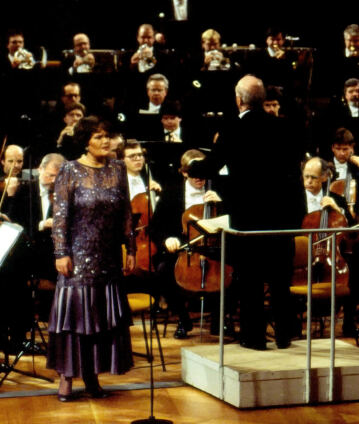Bernard Haitink dirige la Deuxième de Mahler

La Symphonie n° 2 de Gustav Mahler tourne autour de grandes questions métaphysiques. Tandis que le premier mouvement évoque une cérémonie funéraire, les mouvements médians chantent la beauté de la vie et de la nature. Quant au finale, il célèbre la foi et la résurrection de l’homme. Bernard Haitink est le chef d’orchestre idéal pour communiquer la splendeur et la dimension transcendante de l’œuvre.
Berliner Philharmoniker
Bernard Haitink
Sylvia McNair
Jard van Nes
Chœur Ernst Senff de Berlin
© 1993 EuroArts Music International, VIDEAL / brilliant media, SFB